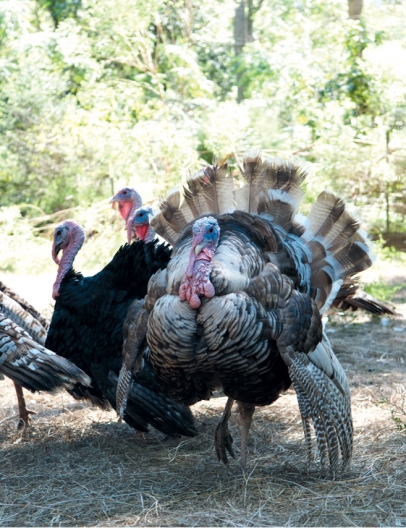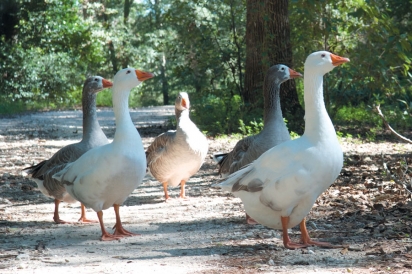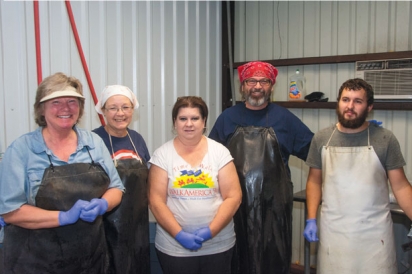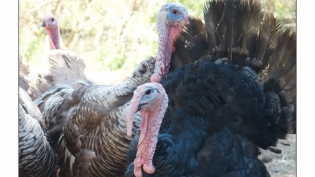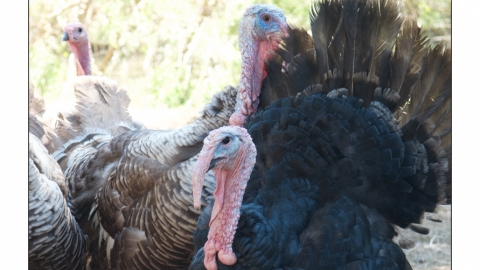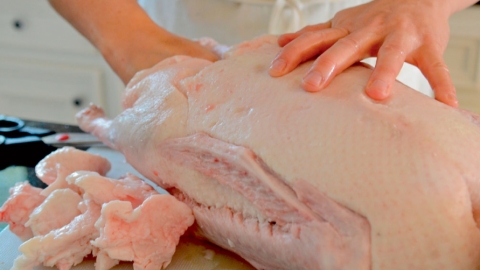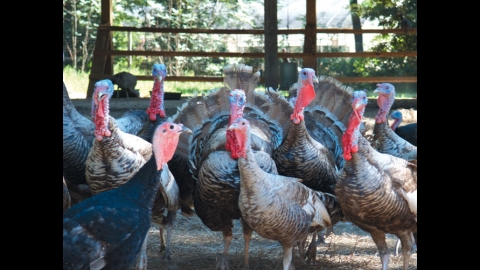Birds of a Heritage Feather
Poultry paradise yields delicious pasture-raised meat
Poultry farmer David Glover of Tejas Heritage Farm mimics a gobble sound and like an army saluting, the dozens of gathered turkeys all raise their heads and gobble uniformly in response. Down the tree-lined driveway, the resident peacock struts unruffled by the cacophony of honks, quacks and cock-a-doodle-doos it sets off. As instantly as it erupts, the symphony of poultry sounds quiets down again. Sprawling over 20 acres of pasture and woodlands amidst the lush foliage of the Sam Houston National Forest, Tejas Heritage Farm is committed to raising heritage breed poultry, including turkey, goose, duck, guinea fowl and chicken, as well as rabbit.
This fall, Auburns make up the majority of the turkeys. It is a domestic breed developed in the early 1800s on the East Coast. Other heritage turkeys include Red Bourbons, Black Spanish and slender grey Slates. “All of them have very subtle different flavors but to me the Slates are some of the nicest. Plus, they pluck very well,” says Glover. Dark feathers can leave a stain because of the natural ink in the quill, one reason why most commercial turkeys are bred to have white feathers. “No one can taste it but unless you’re educated, you think the bird is blemished and therefore not satisfactory.”
Free to forage around the property, their pasture diet of wild berries, flowers and insects is supplemented with certified organic feed from Coyote Creek Organic Feed Mill near Austin, as well as whole wheat sprouted on the farm itself.
With extremely limited availability, most heritage turkey sell out well before the holidays. You could be in luck. Or you could try and get goose, duck, rabbit or even wild boar for your festive meal. Call and find out what they have!
Tejas Heritage Farm: 281-961-4777 (David) or 281-961-3034 (Cheri)
Oaks of Mamre Farm operates a 25-acre heritage poultry family farm just northeast of Hempstead, about 50 miles northwest of downtown Houston via US Highway 290. Oaks of Mamre Farm also raises heritage breed turkey. They are currently not selling at any farmers markets, but offer pickup at the farm - 27959 Mellman Rd., Hempstead, 979-826-9812
Other places to look for free-range, organic turkey, goose or duck include Whole Foods Markets and Central Market.
For a full list of farmers markets in the Houston area, check EdibleHouston.com.


